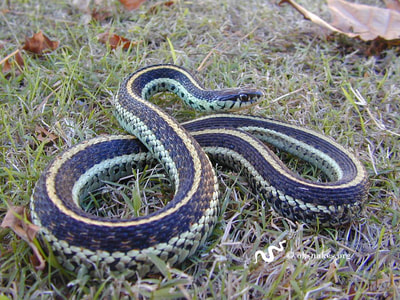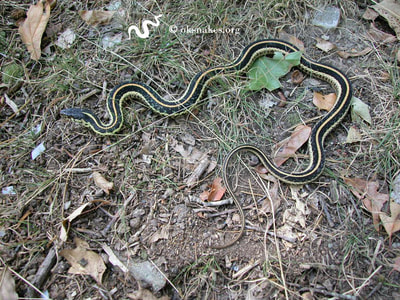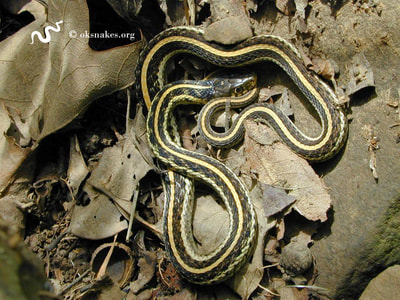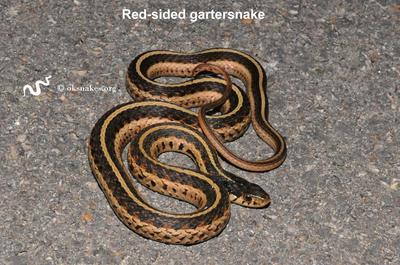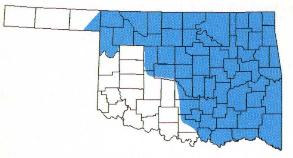Common gartersnake
Thamnophis sirtalis
Thamnophis sirtalis
HARMLESS
Description:
This snake has a thick dorsal stripe that runs down the center of the back from head to tail. It can be yellow to reddish-orange. It has a thinner yellow stripe on either side of the main dorsal stripe, with a black checkered pattern between the stripes. This is how it got the name "garter." It has keeled scales, the belly is plain, and the anal plate is single.
Some forms of the common gartersnake have red coloration on the sides between the yellow stripes. These are known as red-sided garters. They are another form of the common gartersnake, and are typically found in central and eastern Oklahoma.
Size:
Adults 18 - 48 inches (46 - 122 cm)
Prey:
Frogs, toads, salamanders, earthworms, and sometimes small fish and mice
Reproduction:
Mates in spring and gives birth to 5 - 75 babies in late June to August
Habitat:
Found in many habitats, but typically near a water source - damp woodlands, meadows, marshes, farms, and wooded parks
Other Information:
The gartersnake is the most widely distributed snake across North America, and while its coloration is highly variable, the back and side stripes are very distinct and well defined. When first captured, the garter is often quick to bite and expel musk on its attacker, however, they quickly calm down after a few minutes of handling.
This snake is commonly called "garden snake," "gardener snake," or even "grass snake" by many. Our guess is that the first two names originated due to people hearing the word "garter" incorrectly.
Why doesn't the range map show this species in my county?
Description:
This snake has a thick dorsal stripe that runs down the center of the back from head to tail. It can be yellow to reddish-orange. It has a thinner yellow stripe on either side of the main dorsal stripe, with a black checkered pattern between the stripes. This is how it got the name "garter." It has keeled scales, the belly is plain, and the anal plate is single.
Some forms of the common gartersnake have red coloration on the sides between the yellow stripes. These are known as red-sided garters. They are another form of the common gartersnake, and are typically found in central and eastern Oklahoma.
Size:
Adults 18 - 48 inches (46 - 122 cm)
Prey:
Frogs, toads, salamanders, earthworms, and sometimes small fish and mice
Reproduction:
Mates in spring and gives birth to 5 - 75 babies in late June to August
Habitat:
Found in many habitats, but typically near a water source - damp woodlands, meadows, marshes, farms, and wooded parks
Other Information:
The gartersnake is the most widely distributed snake across North America, and while its coloration is highly variable, the back and side stripes are very distinct and well defined. When first captured, the garter is often quick to bite and expel musk on its attacker, however, they quickly calm down after a few minutes of handling.
This snake is commonly called "garden snake," "gardener snake," or even "grass snake" by many. Our guess is that the first two names originated due to people hearing the word "garter" incorrectly.
Why doesn't the range map show this species in my county?
